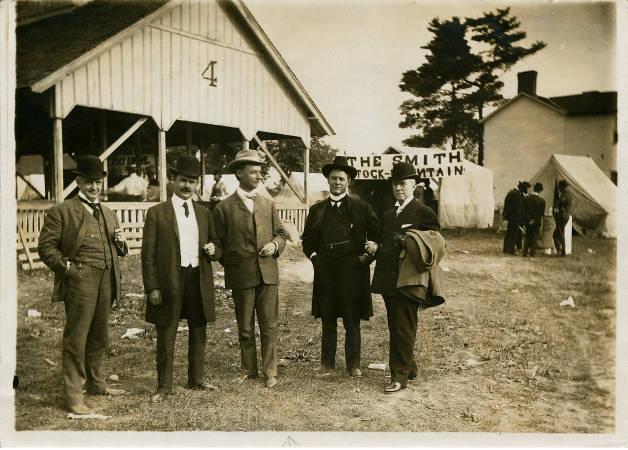
Photo info ...
(Oct. 6, 1862-Apr. 27, 1927). Born in Highland County Ohio, Albert Beveridge moved with his family to Moultrie County Illinois, in 1866. He attended the local common schools, graduated from high school in 1881, and matriculated that fall at Indiana Asbury (later DePauw) University in Greencastle, Indiana.

Following his 1885 graduation from DePauw, where he had honed his considerable oratorical skills, he moved to Indianapolis, read law, and was admitted to the bar in 1887. Beveridge had begun speaking on behalf of candidates while still a college student, and he continued this partisan activity as he established his career.
He also became increasingly prominent in the professional and social life of his adopted city, with memberships in the , the , the , and the .
Both his legal practice and his political ambitions grew during the 1890s, culminating with his election to the U.S. Senate by the Republican-controlled General Assembly in 1899. He was reelected in 1905. In the words of his most noted biographer, Beveridge “came to the Senate a stalwart apologist for business America.” But, gradually, he moved toward the progressive, Theodore Roosevelt wing of the Republican Party, and away from the conservatism of the William Howard Taft majority. He supported such reforms as the direct primary and a national child labor law.
Defeated for reelection in 1911 after the state legislature had gone Democratic, Beveridge cast his lot with the Roosevelt insurgents in 1912. When Taft won renomination at the Republican national convention, Beveridge joined Roosevelt’s Progressive (“Bull Moose”) Party. He delivered the keynote address at the Progressive national convention, served as the convention’s permanent chairman, and accepted nomination as the Progressive candidate for governor of Indiana.
The GOP-Progressive split in 1912 resulted in Democratic victories that fall. Beveridge, like Roosevelt, finished second in his contest. Twice more he sought a Senate seat—as a Progressive in 1914 and as a Republican in 1922—but he was unable to revive his political career. Following his defeat for reelection in 1910, Beveridge returned to Indianapolis, though he subsequently spent much time on the Massachusetts North Shore.
Increasingly, he devoted his energies to literary and historical pursuits, even becoming an active member of the American Historical Association. His four-volume (1916-1919) remains a standard biography of the chief justice; two volumes of a planned Lincoln biography were published posthumously as , 1809-1858 (1928). Beveridge died in the Hoosier capital and is buried in .
FURTHER READING
- Biographical Directory of the United States Congress. “Beveridge, Albert Jeremiah.” https://bioguide.congress.gov/search/bio/b000429.
- Levine, Daniel. “The social philosophy of Albert J. Beveridge.” Indiana Magazine of History (1962): 101–116. https://scholarworks.iu.edu/journals/index.php/imh/article/view/8880/11474.
CITE THIS ENTRY
APA:
Barrows, R. G. (2021). Albert Jeremiah Beveridge. Encyclopedia of Indianapolis. Retrieved Jan 6, 2026, from https://indyencyclopedia.org/albert-jeremiah-beveridge/.
MLA:
Barrows, Robert G. “Albert Jeremiah Beveridge.” Encyclopedia of Indianapolis, 2021, https://indyencyclopedia.org/albert-jeremiah-beveridge/. Accessed 6 Jan 2026.
Chicago:
Barrows, Robert G. “Albert Jeremiah Beveridge.” Encyclopedia of Indianapolis, 2021. Accessed Jan 6, 2026. https://indyencyclopedia.org/albert-jeremiah-beveridge/.

Help improve this entry
Contribute information, offer corrections, suggest images.
You can also recommend new entries related to this topic.